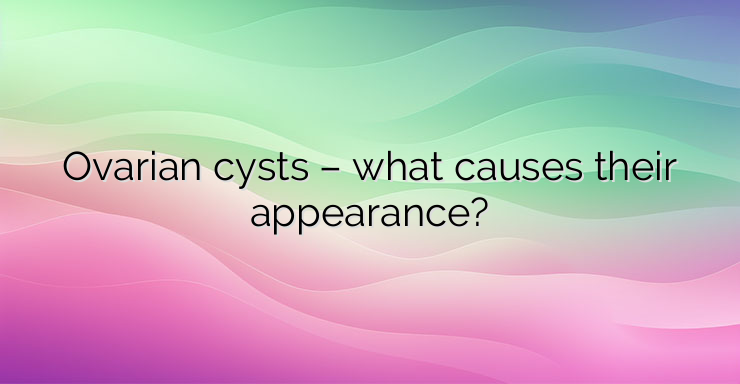Ovarian cysts are common growths that develop on or inside the ovaries. There are several types of cysts. The most common types are harmless, cause no symptoms, and eventually go away without treatment. Rarely, cysts can cause serious complications. An ovarian cyst is a fluid-filled or semi-solid sac that forms on or within one or both ovaries. The ovaries are small organs in the pelvis that store eggs and produce hormones such as estrogen and progesterone. There are different types of ovarian cysts, most of which are painless and harmless (benign). Ovarian cysts usually do not cause symptoms. In most cases, cysts are discovered during routine preventive examinations. Rarely, ovarian cysts can cause complications. Most ovarian cysts are functional cysts. They are formed in response to changes in the body during the menstrual cycle. Less commonly, ovarian cysts form for reasons unrelated to menstruation. Functional cysts are the most common type of ovarian cyst and are not associated with a disease state. They occur as a result of ovulation (release of an egg from the ovary). These cysts may be a sign that the ovaries are functioning properly. Functional cysts usually shrink over time, usually within 60 days, without specific treatment. Functional cysts, in turn, can be of several types. In some cases, functional cysts are also called simple cysts. A small “sac” in the ovary, called a follicle, releases an egg each month as part of the normal menstrual cycle. A follicular cyst forms when the follicle does not release an egg. Instead, the follicle fills with fluid and grows. After the follicle releases an egg, it forms a group of hormone-producing cells called the corpus luteum. A cyst forms when fluid builds up in the corpus luteum, causing it to grow and is called a corpus luteum cyst. However, not all ovarian cysts form in response to the menstrual cycle. They are not always signs of illness, but their follow-up is necessary to avoid complications. An example is cystadenomas that form on the surface of the ovary. They can be filled with fluid that is thin and watery or thicker and mucus-like. Dermoid cysts (teratomas) also exist. They consist of cells that make up all types of tissue in the human body, ranging from skin, hair, teeth and even brain tissue. Endometriomas are filled with endometrial tissue, the same tissue that is shed each month during the cycle. Unlike other types of ovarian cysts, ovarian cancerous cysts (tumors) are hard masses made up of cancer cells. Ovarian cysts are more common in premenopausal women. They are more likely to form and persist during pregnancy.Certain diseases such as endometriosis, hormonal imbalance or taking medications that help ovulation lead to a higher risk of ovarian cysts. References: 1. Management of Suspected Ovarian Masses in Premenopausal Women; Royal College of Obstetricians and Gynecologists 2. The Management of Ovarian Cysts in Postmenopausal Women; Royal College of Obstetricians and Gynaecologists


Leave a Reply